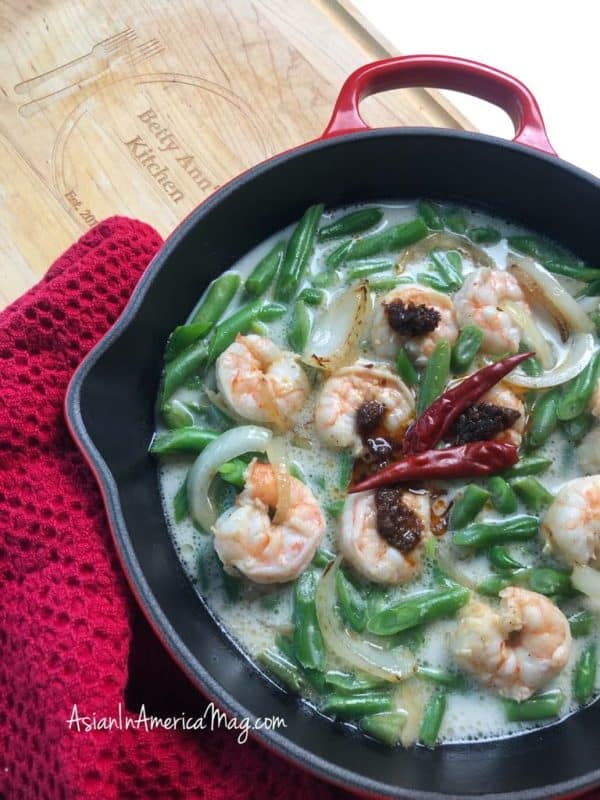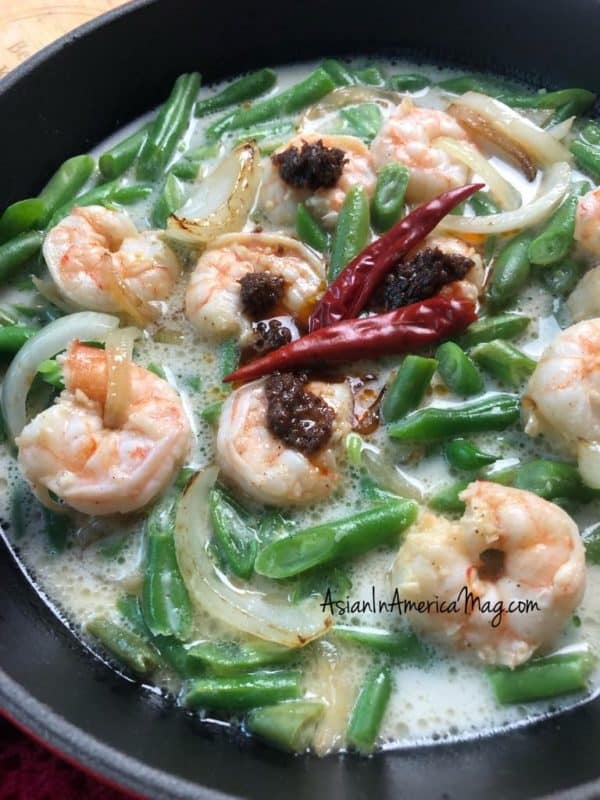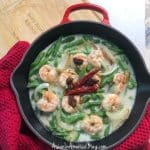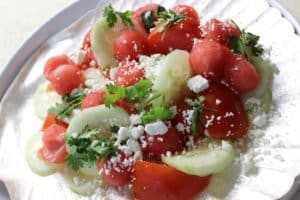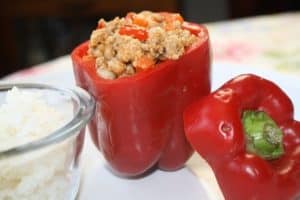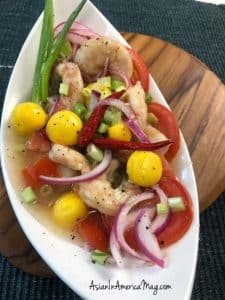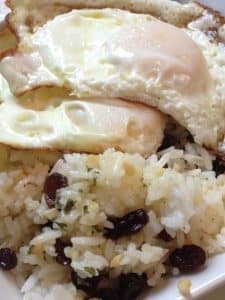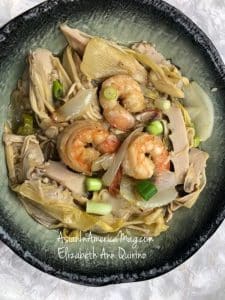Adobong Pinangat na Balatong – Adobo Green Beans in Coconut and Shrimp Paste
As an Amazon Associate and member of other affiliate programs, I earn from qualifying purchases.
We still had scorching-hot days this week, even if summer was ending. So, I cooked Adobong Pinangat na Balatong – Adobo Green Beans in Coconut with Shrimp Paste. It cooks faster than you can say the name in a sentence. The best thing was that I had all the ingredients in my refrigerator as I’m sure you likely will, too.
The Filipino adobo is the unofficial national dish of the Philippines. Every town, city and province has bragging rights to the best adobo dish. It is hard to say which is a favorite. But the basic ingredients of garlic, vinegar, bay leaves, peppercorns, and sometimes soy sauce are what most Pinoy adobo dishes have in common.
This scrumptious entrée I cooked was adapted from the cookbook “Slow Food Adobo”, a collection of prize-winning adobo recipes from the annual Adobo Festival in Bacolod, Philippines, organized by my cousin Lyn Besa-Gamboa, and her friends, all culinary enthusiasts. I have been invited many times to this event held at the Balay Negrense Museum in Silay City, Negros Occidental. Someday, I hope to relish all the innovative adobo creations by these talented, emerging Filipino chefs.
The word balatong is Visayan for long green beans (sitaw). I used green beans instead. When the garlic and onions sizzled in the skillet, I added the shrimps. They turned pink and succulent when I pierced a fork to test it. The salty bagoong (shrimp paste) added to the coconut milk, vinegar, soy sauce was fragrant and flavorful on the shrimps and vegetables. This was a different spicy adobo, traditional, yet cooked superbly for today’s meal.
My cousin Lyn said, “These adobo recipes are a concrete testament to the Filipinos’ excellence and uniqueness in presenting adobo in countless ways.”
Adobong Pinangat na Balatong - Adobo Green Beans in Coconut and Shrimp Paste
Ingredients
- 4 Tablespoons vegetable oil
- 1 whole bulb garlic peeled, crushed
- 1 whole white or yellow onion chopped
- 1 Tablespoon bagoong guisado (sauteed Filipino shrimp paste) from Asian markets
- 1 pound large fresh shrimps peeled, heads and tails removed
- 1/2 pound green beans trim edges, cut into 2-inch length pieces; or use sitaw (long green beans)
- 1 cup coconut milk fresh or canned
- 1/2 cup white vinegar
- 1/8 cup toyo (soy sauce)
- 1 to 2 pieces siling labuyo (bird's eye chilies)
- 1/2 teaspoon salt
- 1 teaspoon ground black pepper powder
- steamed rice for serving
Instructions
- In a large skillet or saucepan, over medium-high heat, add the vegetable oil. When oil is hot enough in about 2 minutes, saute the garlic, and onions. When onions are translucent and fragrant, after 1 to 2 minutes, add the bagoong (shrimp paste) and the shrimps. Stir around for flavors to blend.
- Add the green beans to the shrimp saute. Pour the coconut milk. Lower heat to a medium and simmer for 5 minutes.
- Pour the vinegar and soy sauce. Add the siling labuyo (bird's eye chilies). Season with salt and black pepper.Cover and over medium heat, continue cooking for 8 to 10 minutes more till green beans and shrimps are cooked. Serve warm over steamed rice.
Nutrition
Notes on Nutrition: The nutrition information provided is an estimate and will vary based on cooking methods and specific brands of ingredients used.
Did you like this recipe? I have more classic recipes inspired by my late mother’s cooking in my popular cookbook: My Mother’s Philippine Recipes. If you’re learning how to cook Filipino food or a fan of Philippine cuisine, buy my cookbooks and books on Amazon.com sold worldwide in paperback and Kindle format.
Hello, Friends! Please DO NOT LIFT OR PLAGIARIZE my original recipe, stories, photos or videos. All the images and content on this blog are COPYRIGHT PROTECTED and owned by my media company Besa-Quirino LLC. This means BY LAW you are NOT allowed to copy, scrape, lift, frame, plagiarize or use my photos, essays, stories and recipe content on your websites, books, films, television shows, videos, without my permission. If you wish to republish this recipe or content on media outlets mentioned above, please ASK MY PERMISSION, or re-write it in your own words and link back to my blog AsianInAmericaMag.com to give proper attribution. It is the legal thing to do. Thank you. Email me at [email protected]

